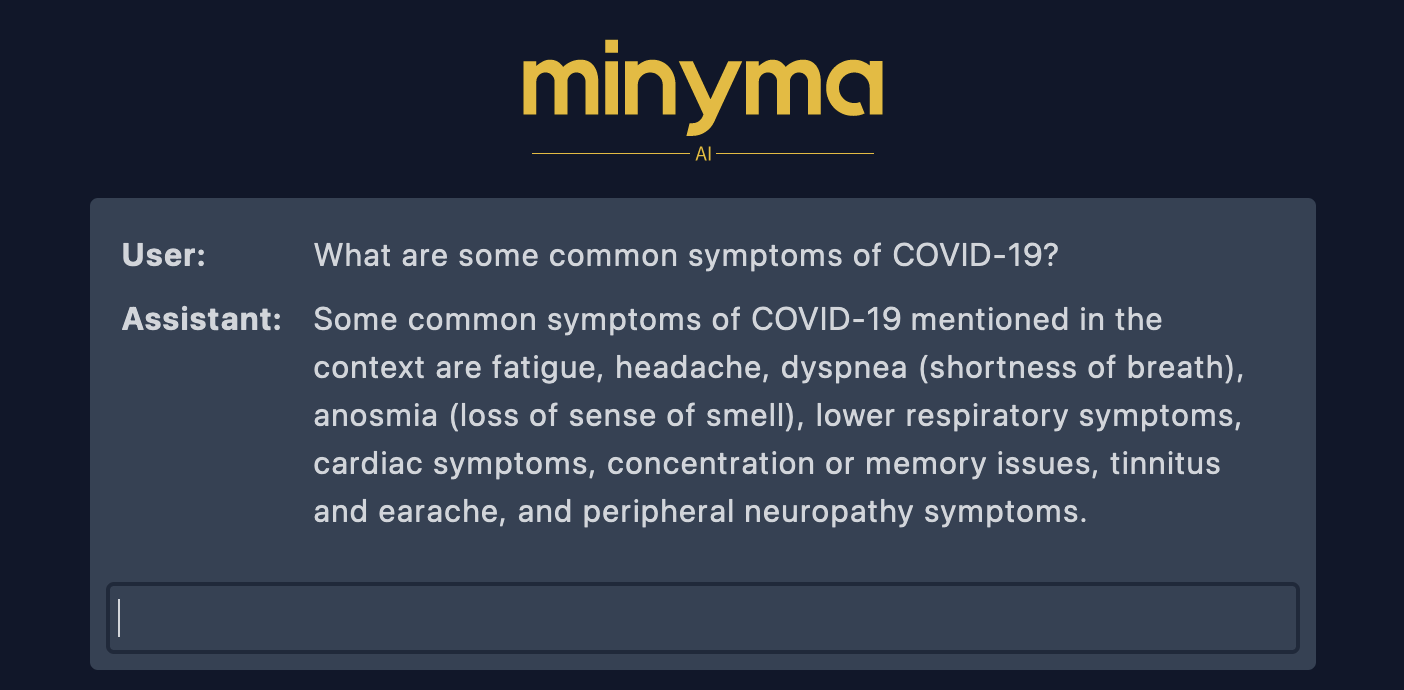3.8 KiB

AI Chat Bot with Vector / Embedding DB Context
Running Server
# Locally (See "Development" Section)
export OPENAI_API_KEY=`cat openai_key`
minyma server run
# Docker Quick Start
docker run \
-p 5000:5000 \
-e OPENAI_API_KEY=`cat openai_key` \
-e DATA_PATH=/data \
-v ./data:/data \
gitea.va.reichard.io/evan/minyma:latest
The server will now be accessible at http://localhost:5000
Normalizing & Loading Data
Minyma is designed to be extensible. You can add normalizers and vector db's
using the appropriate interfaces defined in ./minyma/normalizer.py and
./minyma/vdb.py. At the moment the only supported database is chroma
and the only supported normalizer is the pubmed normalizer.
To normalize data, you can use Minyma's normalize CLI command:
minyma normalize \
--filename ./pubmed_manuscripts.jsonl \
--normalizer pubmed \
--database chroma \
--datapath ./chroma
The above example does the following:
- Uses the
pubmednormalizer - Normalizes the
./pubmed_manuscripts.jsonlraw dataset [0] - Loads the output into a
chromadatabase and persists the data to the./chromadirectory
NOTE: The above dataset took about an hour to normalize on my MPB M2 Max
[0] https://huggingface.co/datasets/TaylorAI/pubmed_author_manuscripts/tree/main
Configuration
| Environment Variable | Default Value | Description |
|---|---|---|
| OPENAI_API_KEY | NONE | Required OpenAI API Key for ChatGPT access. |
| DATA_PATH | ./data | The path to the data directory. Chroma will store its data in the chroma subdir. |
Development
# Initiate
python3 -m venv venv
. ./venv/bin/activate
# Local Development
pip install -e .
# Creds
export OPENAI_API_KEY=`cat openai_key`
# Docker
make docker_build_local
Notes
This is the first time I'm doing anything LLM related, so it was an adventure.
Initially I was entertaining OpenAI's Embedding API with plans to load embeddings
into Pinecone, however initial calculations with tiktoken showed that generating
embeddings would cost roughly $250 USD.
Fortunately I found Chroma, which basically solved both of those issues. It allowed me to load in the normalized data and automatically generated embeddings for me.
In order to fit into OpenAI ChatGPT's token limit, I limited each document to roughly 1000 words. I wanted to make sure I could add the top two matches as context while still having enough headroom for the actual question from the user.
A few notes:
- Context is not carried over from previous messages
- I "stole" the prompt that is used in LangChain (See
oai.py). I tried some variations without much (subjective) improvement. - A generalized normalizer format. This should make it fairly easy to use completely different data. Just add a new normalizer that implements the super class.
- Basic web front end with TailwindCSS

